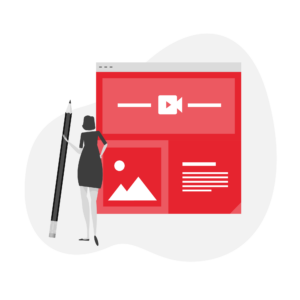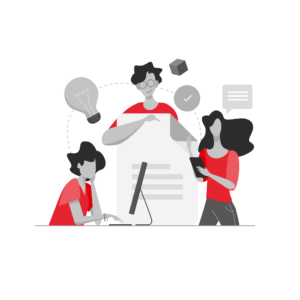“If I had an hour to solve a problem, I’d spend 55 minutes thinking about the problem and five minutes thinking about solutions.” — Albert Einstein
Have you ever felt tempted, when initially facing a problem, to grab a tool and start working away? As the quote above demonstrates, that’s not always the most effective path. Before reaching for your tool box, dedicate substantial time to understanding the obstacle you’re facing.
Momentum in any direction is not nearly as valuable as momentum in the correct direction. When, as a leader, you take the time to craft a clear goal and wrap your head around the current challenge, you prevent wasted or even harmful efforts.
Identifying the Correct Tool
 As you begin considering the various tools at your disposal, it can be tempting to weigh efficiency above all else. However, getting the job done quickly is not the same thing as getting it done well. This is an area where leaders, particularly those under a great deal of pressure to make problems disappear, can struggle. Intentionality and reflection are both key to the evaluation process.
As you begin considering the various tools at your disposal, it can be tempting to weigh efficiency above all else. However, getting the job done quickly is not the same thing as getting it done well. This is an area where leaders, particularly those under a great deal of pressure to make problems disappear, can struggle. Intentionality and reflection are both key to the evaluation process.
A leader’s toolkit contains a number of different instruments falling within many categories. There are the physical tools you might use, such as laptops, whiteboards, and the like. Tools can also include items such as the software you select to provide insights and organize processes. However, the definition extends far beyond that.
Supporting Your Team

Consider that sometimes the correct tool for a job is a particular skill set. Solving your problem might involve finding and supporting the team member who possesses that skill set. You might need someone who is skilled at giving presentations or selling people on an idea. Or, another problem might call for a talented designer or expert marketer.
The systems and processes you implement within your workplace must support that team member in their important work.
Some problems are best solved by a large group of people working together. Collaboration can be a powerful tool, but it doesn’t always occur naturally. As a leader, you must identify the best manner in which to bring your team together, matching the current scenario with an appropriate system and structure. This could include:
- Several small groups working concurrently
- A group think or brainstorming session
- A whole team working continuously together
- The creation of an initial prototype by a few team members, followed by a larger collaborative process
The Harm of the Wrong Tool
In our book, Would You Work for You? — The Quest: Discovering the Leader Within, we wrote that “If something is missing, build it. If something is not working, fix it. Stop using the hammer if the job requires a screwdriver.”
 Using the wrong tool can be detrimental to your work, and even small liberties can have an impact. Use a screwdriver when the job calls for a screwdriver, but also make sure you’re using the right screwdriver. The wrong one might strip the screw, putting you in real trouble. You’ll have to replace the screw, you’ll have to replace the screwdriver, and you’ll have to start the project all over again because you avoided the opportunity to get it right the first time.
Using the wrong tool can be detrimental to your work, and even small liberties can have an impact. Use a screwdriver when the job calls for a screwdriver, but also make sure you’re using the right screwdriver. The wrong one might strip the screw, putting you in real trouble. You’ll have to replace the screw, you’ll have to replace the screwdriver, and you’ll have to start the project all over again because you avoided the opportunity to get it right the first time.
What Else Do You Need?
You also need to invest in your own, personal tool belt. No matter how much time you spend examining problems and building systems and processes, there will still be moments when you need the input of advisors. No one is capable of doing everything alone, without the benefit of mentorship or support. Ensure you have access to people whose perspectives and expertise you value. They’ll keep your vision clear and your tool belt filled.
Are you ready to step forward and lead? Read our free eBook to learn how to develop your leadership language and engage others.

Author, Speaker, and Change Agent.
Chris leads a dynamic team of passionate change agents who are dedicated to partnering with organizational executives to create cultures that inspire, engage and ignite the best in people. Our work is dedicated to harnessing the power of culture to equip leaders, build amazing teams and align operation practices to delighting the customer and drive breakthrough results.




